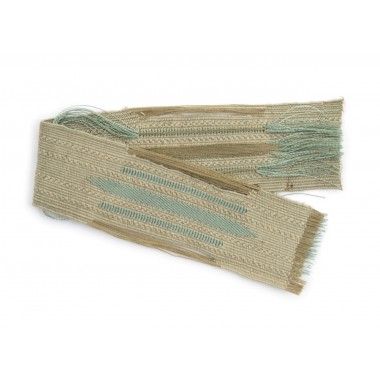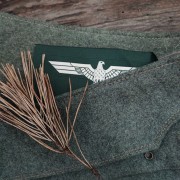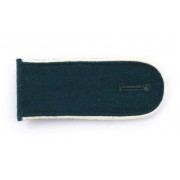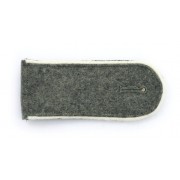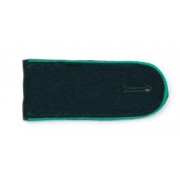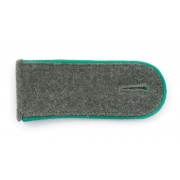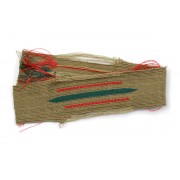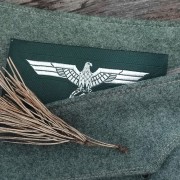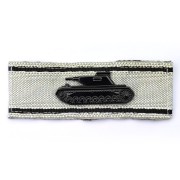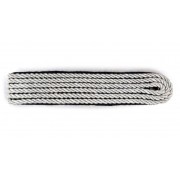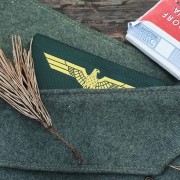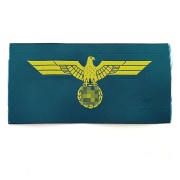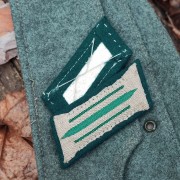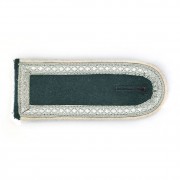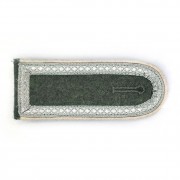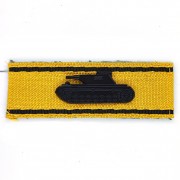Description
Generic or common tabs (mod. 1940) — for field uniform of the Wehrmacht, for all branches. Gray-beige base and dull green stripes. Most often found on jackets, produced in 1941-1945.
The price is for a couple of collar tabs (kit for one jacket).
These BeVo collar tabs (woven) are the total copy of the originals. Original "Litzen" were made in the form of a tape, and before sewing they were cut and bent in a special way to get "reels". The market offers collar tabs made on modern equipment from a thin thread and already cut in the form of reels. Although it is easier to sew such, but they will never give an authentic look like our collar tabs! They will look like paper, with minor errors in the pattern of weaving and eventually spoil the whole jacket.
Original collar tabs differed in shades from batch to batch. We offer collar tabs with pale green (Feldgrau) stripes on a gray-beige base.
How to sew the collar tabs?
1. Form the reels. Use chalk, a sharp piece of soap (or eventually, a pencil) to draw the lines along which the edges of the collar tabs will be bent. Cut the excess at the edges with a margin of 5 mm from the fold line. The threads along the tabs also need to be cut, but not completely, so not to let them become loose. Use PVA glue and iron to form the reels. Coat the reverse sides with the PVA (try to pour the glue as little as possible, so it did't leak on the front side or edges), and use iron for bending.
Don't forget that the tabs are mirror-image! Their edges are bent in different directions. Colored strips serve as a guide for bending.
2. When the tabs ares formed, they are to be sewn. First, apply them to the collar and place evenly. Approximately 1 cm from the edges of the collar and parallel to these edges. After that fix the tabs with a bright thread (which is then removed) or glue. After that start to sew them straight machine stitching on the long sides, using grey or beige thread. Sew the remaining parts with tiny stitches over the edge. The thread is placed along the strips on the buttonhole, so the stitches will be invisible and neat.
Historical reference.
To make the uniform closer colour to the terrain, all the color details were gradually removed. Generic collar tabs (without the colored stripes of service branches) were introduced by the order of November 26, 1938. The colour stripes on the tabs became plain dark green (like mod. 1936 jacket's collar). And by order of May 9, 1940 the stripes became dull green or gray (officially it was Feldgrau), so they fit the collar of the 1940 jacket (also Feldgrau).
It was common for the German army and military industry to use already produced parts completely out, even after the official replacement was issued. This rule could be traced in everything, it did't pass the collar tabs too. After the introduction of common collar tabs they kept sewing previous model of tabs with colored stripes, and this lasted mass until 1940 year (judging by photos and original uniform pieces, that we can study today). Respectively you can see the generic tabs mod. 1938 on the jackets produced from 1940 to 1941 (then it was a model 1940 with Feldgrau collars) most often, though distinctive dark green stripes planned for the dark green collars of jackets mod. 1936).
Inexperienced reenactors often don't know this historical fact and are guided by a simplified scheme: jacket 1940 means eagle and tabs 1940. That's is correct in general, but not typical for the selected period.










